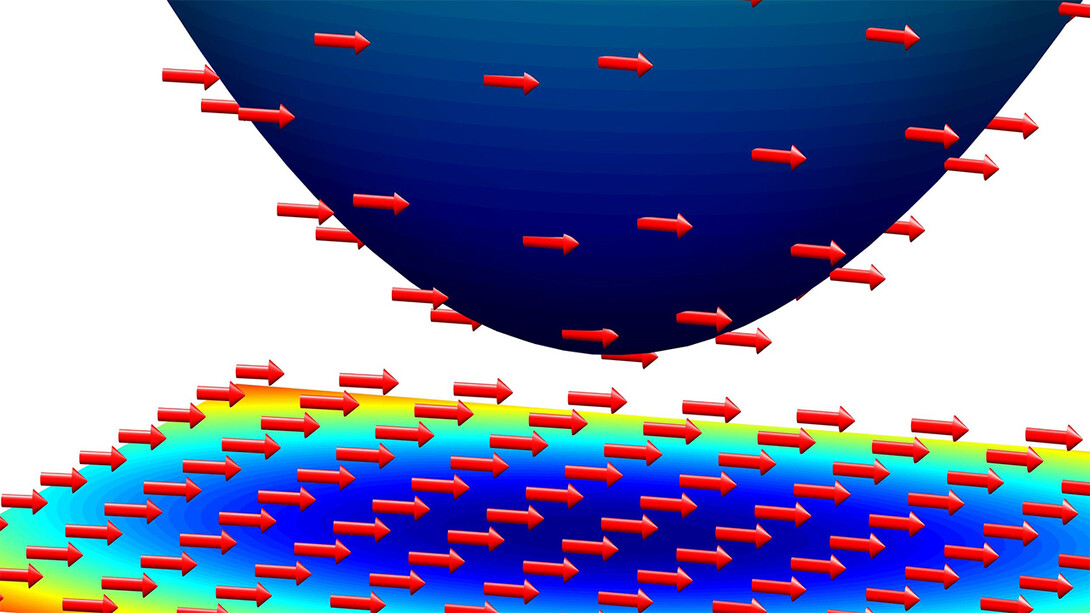
Taking electrons out for a spin through the nanoscopic streets of a digital device — without spinning out of control — has challenged researchers for years.
But maintaining that control as the sub-atomic particles race toward processors could yield an ever-prized trophy: cheaper, faster and far more energy-efficient devices.
Evgeny Tsymbal and Lingling Tao may have just waved the green flag — or at least ditched the white one. The University of Nebraska–Lincoln physicists have identified a material whose crystalline structure might better sustain an electron’s spin: a property that, similar to charge, can represent bits of information in digital devices.
Standard CPUs read amounts of electric charge as either 1s or 0s, with that charge opening or closing a gate that regulates the electrons’ flow. In much the same way, spintronic devices can read the orientation of an electron’s spin: up vs. down. Devices that can speak both digital languages — charge and spin — stand poised to process and store information at rates that easily surpass the devices available on today’s market.
Yet the spin orientation of an electron can flip on a quantum whim, and often does. That’s a problem for electrical engineers.
One promising solution involves applying voltage to the gate that already dictates the flow of electrons. Voltage can essentially “write” the spin of those electrons as up or down while they flow, but inevitable imperfections in the nanoscopic structure of a device will also alter their momentum. And because momentum affects spin, a shift in the electrons’ velocity or trajectory can change their intended spin states before they get read by a processor, potentially resulting in gibberish.

“The process becomes basically a random flipping of spin,” said Tsymbal, George Holmes University Professor of Physics and Astronomy. “When electrons arrive at the region where they should be detected, they lose the information encoded in their spin orientation.”
Enter a material known as bismuth indium oxide. Based on calculations run through the university’s Holland Computing Center, the crystalline material features a set of atomic symmetries that seem to pin an electron’s spin in a certain direction that’s independent of its momentum. If true, engineers could begin using voltage to dictate spin without worrying about how defects affect an electron’s momentum.
The atomic symmetries of bismuth indium oxide probably exist in other crystalline materials, Tsymbal said, meaning that material scientists are likely to discover other candidates.
“Once a material has this particular crystal symmetry, one can claim that this material should also have the spin-sustaining property,” said Tsymbal, director of Nebraska’s Materials Research Science and Engineering Center.
Spintronic devices already consume substantially less energy than standard electronics. Tsymbal said the potential to write spin orientation using voltage rather than electric current could make the devices even more efficient — potentially up to 1,000 times more so.
“Spintronics is also energy-related research, because by saving energy in our electronic devices, we reduce power consumption,” Tsymbal said. “This is a very important issue.”
Tsymbal and Tao, a postdoctoral researcher in physics and astronomy, reported their findings in the journal Nature Communications. They received support from the National Science Foundation.







